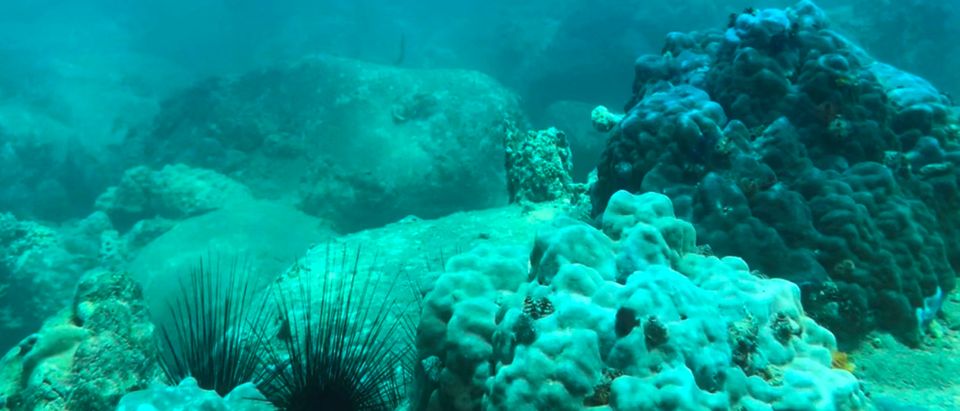Explorers discovered strange holes on the Atlantic Ocean floor during a dive July 23, leaving some scientists stumped.
The holes were a mile or deeper, and were arranged in tracks along the floor, The New York Times reported Thursday. Scientists believe the holes may be an example of “lebensspuren,” a German word for “life traces,” meaning the tracks could be the work of living organisms.
“The origin of the holes has scientists stumped,” National Oceanic and Atmospheric Administration (NOAA) Ocean Exploration wrote on Twitter. “The holes look human made, but the little piles of sediment around them suggest they were excavated by…something.”
On Saturday’s #Okeanos dive, we saw several sublinear sets of holes in the seafloor. The origin of the holes has scientists stumped. The holes look human made, but the little piles of sediment around them suggest they were excavated by…something.
What’s YOUR hypothesis? pic.twitter.com/iGezxV9TK8
— NOAA Ocean Exploration (@oceanexplorer) July 25, 2022
Twenty-seven miles away, explorers spotted similar holes 20 years ago, The New York Times reported. Scientists didn’t have an answer concerning their origin, either.
The recent discovery was mysterious, said Michael Vecchione, an NOAA deep-sea biologist who was a part of the exploration. (RELATED: ‘Only Go Waist Deep’: Officials Sound Alarm After Several People Get Attacked By Sharks)
“There is something important going on there and we don’t know what it is,” Vecchione said, according to The New York Times. “This highlights the fact that there are still mysteries out there.”
Explorations such as these — many of them into underwater volcanoes — can help scientists determine whether, and how, life can exist on other planets, Derek Sowers, an expedition coordinator aboard the NOAA ship, told The New York Times.
“This has expanded our understanding of under what conditions life on other planets may occur,” Sowers said, according to The New York Times.


